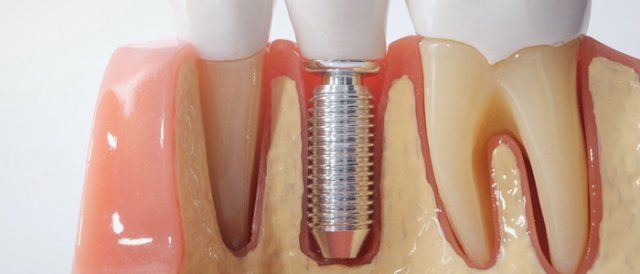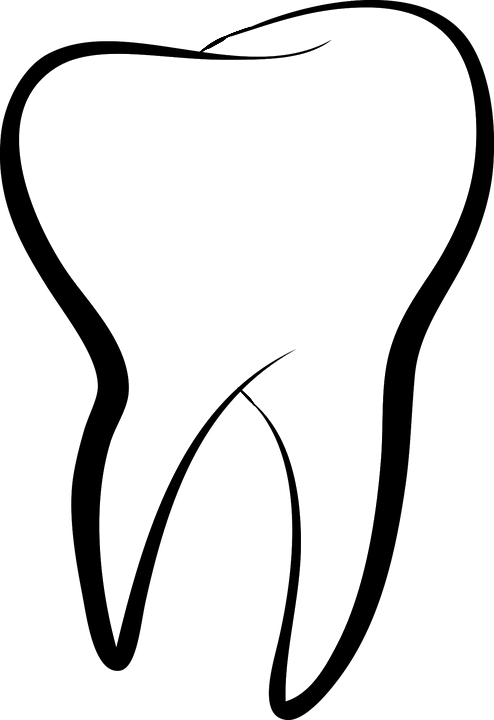Restorative Dentistry Services
Advanced Restorative Dental Care
Many things can cause our teeth or overall oral health to become compromised, such as poor nutrition, poor dental hygiene, accidents, genetics, or other health issues. Practicing preventative dentistry can head many of these problems off at the pass. But sometimes, even when we take every preventative measure, dental problems occur. Teeth can get broken or knocked out, a tooth may need to be removed, decay can set in, or teeth may need to be replaced or repaired. That’s where restorative dentistry comes in!
Dr. James E. Silvia provides an extensive list of restorative dentistry services which are conveniently available right in their office. We employ uncompromised artistry along with the skill and comfort you can expect from us. It is our goal to restore your smile and your sense of wellbeing all in the comfort of our office by the same dentist you’ve come to know and trust for over 18 years!

Crowns
Crowns are made of metal, ceramic, or a combination of the two and require very high temperatures in converting the carved representation into the finished product. Crowns are fitted to a model of your mouth that is made at the time the teeth are prepared in your mouth. The crown is shaped and fitted to this model in the laboratory before the dentist tries it in your mouth. This process ensures that the crown will have a fit and appearance that will last for many years.
When are Crowns Needed?
When a tooth is fractured, severely damaged by decay, or has a large old filling, a crown (also called a cap) is often placed. A crown strengthens the tooth, protects the remaining tooth structure, and can improve appearance.
The location of the tooth, the intensity of the bite, and your requirements as a patient are some of the factors used in deciding which type of crown is best for you.
Bridges
A bridge is a replacement tooth that is supported and attached by a crown on either side of the space. The two side teeth or (anchor teeth) are prepared to provide support the bridge.
To replace a missing tooth with a conventional three-unit bridge, teeth adjacent to the gap are prepared. The custom-made bridge is fitted and adjusted. Appearance immediately after a tooth is lost. When a tooth is not replaced, the remaining teeth can drift out of position. This can lead to cavities and gum disease.
Root Canal
Crowns are made of metal, ceramic, or a combination of the two and require very high temperatures in converting the carved representation into the finished product. Crowns are fitted to a model of your mouth that is made at the time the teeth are prepared in your mouth. The crown is shaped and fitted to this model in the laboratory before the dentist tries it in your mouth. This process ensures that the crown will have a fit and appearance that will last for many years.
When are Crowns Needed?
When a tooth is fractured, severely damaged by decay, or has a large old filling, a crown (also called a cap) is often placed. A crown strengthens the tooth, protects the remaining tooth structure, and can improve appearance.
The location of the tooth, the intensity of the bite, and your requirements as a patient are some of the factors used in deciding which type of crown is best for you.
Bridges
A bridge is a replacement tooth that is supported and attached by a crown on either side of the space. The two side teeth or (anchor teeth) are prepared to provide support the bridge.
To replace a missing tooth with a conventional three-unit bridge, teeth adjacent to the gap are prepared. The custom-made bridge is fitted and adjusted. Appearance immediately after a tooth is lost. When a tooth is not replaced, the remaining teeth can drift out of position. This can lead to cavities and gum disease.
Root Canal
Endodontic treatment can safely and comfortably save a tooth that otherwise would have to be removed. In fact, root canal therapy is successful approximately 95% of the time. Remember, a healthy restored tooth is always better than an artificial one.
Why couldn’t you just remove the tooth? The choice is yours, but there are many disadvantages to losing a tooth. When a tooth is removed and not replaced, the teeth next to the empty space begin to shift from their normal position. This may cause teeth to become crooked or crowded, which decreases chewing and biting efficiency. Crowded or crooked teeth may be more prone to dental disease because they are harder to keep clean than properly aligned teeth. As a result, other teeth may be lost if the missing tooth is not replaced.
A replacement tooth (an implant or a bridge) is usually more expensive than Endodontic treatment and involves more extensive dental procedures on adjacent teeth.
Why couldn’t you just remove the tooth? The choice is yours, but there are many disadvantages to losing a tooth. When a tooth is removed and not replaced, the teeth next to the empty space begin to shift from their normal position. This may cause teeth to become crooked or crowded, which decreases chewing and biting efficiency. Crowded or crooked teeth may be more prone to dental disease because they are harder to keep clean than properly aligned teeth. As a result, other teeth may be lost if the missing tooth is not replaced.
A replacement tooth (an implant or a bridge) is usually more expensive than Endodontic treatment and involves more extensive dental procedures on adjacent teeth.

Dental Implants
Dental implants are metal posts or frames that are surgically positioned into the jawbone beneath your gums. Once in place, they allow your dentist to mount replacement teeth onto them. Because implants fuse to your jawbone, they provide stable support for artificial teeth. For some people, ordinary bridges are simply not comfortable or even possible, ordinary bridges must be attached to teeth on either side of the space left by the missing tooth.
An advantage of implants is that no adjacent teeth need to be prepared or ground down to hold your new replacement tooth/teeth in place. Dentures and bridges mounted to implants won't slip or shift in your mouth — an especially important benefit when eating and speaking. This secure fit helps the dentures and bridges — as well as individual crowns placed over implants — feel more natural than conventional bridges or dentures.
To receive implants, you need to have healthy gums and adequate bone to support the implant. You must also commit to keeping these structures healthy. Meticulous oral hygiene and regular dental visits are critical to the long-term success of dental implants

Partial Dentures
Removable partial dentures have been used to replace groups of teeth or a few teeth scattered across the lower or upper jaw. There are a variety of removable partial dentures available to patients and each one comes with its own set of benefits and disadvantages. All partial dentures attach to remaining teeth and have a gum–colored portion meant to blend into the existing gum, with prosthetic teeth to replace the missing teeth.
Complete Dentures
Full or complete dentures are similar to partial dentures in that they are prosthetic teeth and gums used to replace missing teeth. The main difference between full and partial dentures is that full dentures are a total replacement system for either upper or lower teeth and, in some cases, both.
We are here when you
need us. Call Today!
508-673-3336
Local Owned & Operated
Since 2001


